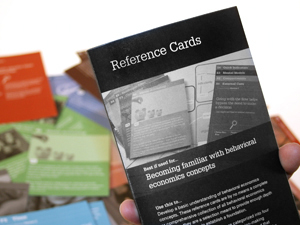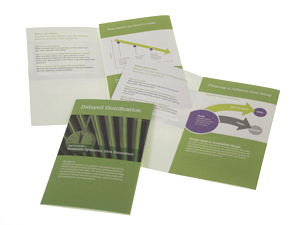A toolkit to help designers and business leaders understand and influence consumer decisions.The toolkit is designed to be both informative and actionable - helping you integrate the latest research in human behavior and decision making into your practice. Donate now and help us keep the tools available for free. |
|
These reference cards are helpful when becoming familiar with basic behavioral economics concepts. This tool is by no means a complete or comprehensive collection of all behavioral economics concepts; they are a selection meant to provide enough depth and coverage to help establish a foundation. Terms on the reference cards are categorized into four decision-making factors and four decision-making shortcuts. Each category includes an index card that provides an overview of the category and suggestions for related design strategies. |
The Concept Ecosystem poster helps visualize behavioral economics concepts. We have identified four decision-making factors and four decision-making shortcuts in our research. These concepts are organized into different levels of specificity to help designers understand how these decision-making drivers relate to one another. |
These three guides help evaluate different irrational situations during the research synthesis and generation process. Irrational situations include:
|
This deck of cards provide 21 strategies to change user behavior. This tool will help you or your team brainstorm and design solutions during idea generation. This card deck works best as a synthesis tool if you have at least a basic understanding of user needs and motivations. |
 Loss/Gain
Worksheet Loss/Gain
Worksheetunderstanding and designing for trade-offs Once you have basic understanding of your target user’s needs and motivations this worksheet will help you evaluate losses and gains. The worksheet will help you generate ideas about how to redesign losses and gains to make a behavior or activity more desirable. Loss/Gain Introduction
|




